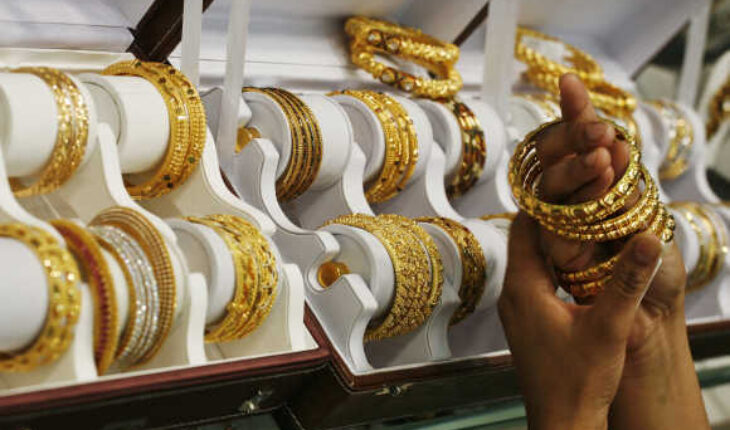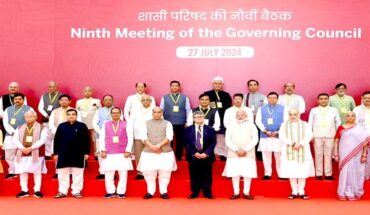The price of gold has increased by about 70 percent during March 2019 to March 2024. The price of gold has been continuously touching new heights for the last few years and its price is expected to increase further during the festive and wedding season. In the current scenario, it can cross the level of Rs.80,000 per 10 grams by December.
The price of 24 carat 10 grams of gold was Rs 63,352 on January 1, 2024, which has now increased to Rs 79,710. Only during January 1, 2024 to October 18, 2024, the price of gold has increased by Rs 16,358. Due to the continuous increase in the price of gold, the average daily trading volume in the global gold market in the month of September was Rs 18 lakh crore, which is 13 percent less than April 2024. However, this is 32.51 percent more than the average of Rs 13.6 lakh crore per day in 2023.
Due to the global economic environment remaining soft, the possibility of recession in some countries, a long-standing geopolitical crisis between some countries of Europe and Asia, the US Federal Reserve cutting the policy rates by 0.50 basis points on September 18, etc., investors are losing confidence in the dollar and people are finding it better to invest in gold in the hope of higher returns.
There has been no change in policy rates in India for a long time, due to which the interest rate on deposits in banks and other financial institutions is low, due to which investors are investing in gold for higher returns. The increase in the price of gold has also increased its returns. Those who invest in gold have got a return of 0.2 percent in a week, 0.4 percent in a month, 21 percent in 2024, 30 percent in a year and 62 percent in 3 years.
The Bureau of Indian Standards has been hallmarking jewellery made of 14 carats, 18 carats, 22 carats, 23 carats and 24 carats since 2022. Now from January 1, 2025, the Central Government is going to make hallmarking mandatory for gold bullion used in jewellery manufacturing, which is planned to be materialized across the country in a phased manner. The committee formed on hallmarking on gold bullion has submitted its report to the government in the matter. After hallmarking is made mandatory for gold bullion, it will be possible to ensure the purity of the jewellery. This will also reveal how much the quality of gold has been affected before and after the making of jewellery, which will help investors get better returns on their investment. According to the World Gold Council, Switzerland bought the most gold worth Rs 2461 crore in the world in May 2024, while China bought gold worth Rs 2,109 crore. India stood third by buying gold worth Rs 722 crore. At the same time, Germany bought gold worth Rs 556 crore, South Africa bought gold worth Rs 459 crore, Ireland bought gold worth Rs 459 crore, Japan bought gold worth Rs 376 crore, France bought gold worth Rs 247 crore and Turkey bought gold worth Rs 107 crore.
In the last 5 financial years, India has increased its gold deposits by about 204 tonnes. In March 2019, 618.2 tonnes of gold were deposited in the Reserve Bank of India, which increased by 33 percent to 822.1 tonnes on March 31, 2024, out of which 408.3 tonnes were deposited in the country and 413.8 tonnes abroad. In March 2020, 661.4 tonnes of gold were deposited in the central bank, while in March 2021 it was 695.3 tonnes. At the same time, it was 760.3 tonnes in March 2022 and 794.6 tonnes in March 2023.
In terms of gold reserves, USA ranks first in the world with 8,133.46 tonnes of gold, while Germany ranks second with 3,352.65 tonnes of gold. At the same time, Italy is in third place with 2451.84 tonnes of gold. The Central Bank of France has 2436.88 tonnes of gold deposits and is ranked fourth. Russia has 2332.74 tonnes, China has 2262.45 tonnes, Switzerland has 1040.00 tonnes, Japan has 845.97 tonnes, India has 822.09 tonnes and Netherlands has 612.45 tonnes of gold deposits and are ranked fifth, sixth, seventh, eighth, ninth and tenth respectively globally.
The importance of gold is incomparable. If the currency of a country weakens internationally, the gold reserves help in maintaining the purchasing power of that country and its economic stability. In 1991, when the Indian economy was in crisis and it did not have enough dollar reserves to import, it raised money by pledging gold and was successful in coming out of a serious economic crisis.
If a country has adequate gold reserves, then the economy of that country is considered strong. This also shows that the country is managing its economy well. Other countries and global financial institutions also trust such a country more. In this way, gold reserves provide a strong basis to support the price of the currency of any country.
The importance of gold in India has remained since time immemorial and in the current perspective and in the coming days, there is no possibility of its demand decreasing. The price of gold has also increased due to more purchase of gold by the Reserve Bank of India and the central banks of other countries. Due to the buying and selling of gold in the country and hallmarking of gold, the confidence of investors in investing in gold is increasing, which is also causing an increase in the price of gold.
In short, it can be said that in the current economic scenario of the country, gold is giving attractive returns to the investors and due to the slowdown in the economy of major countries at the global level, weakening of the dollar, persistence of geo-political crisis at the global level, no complete relief from inflation, continuous increase in the demand for gold, etc., the price of gold is not going to decrease in the near future.Satish Singh, Ahmedabad Based Senior Columnist, views are personal.





